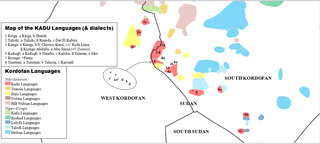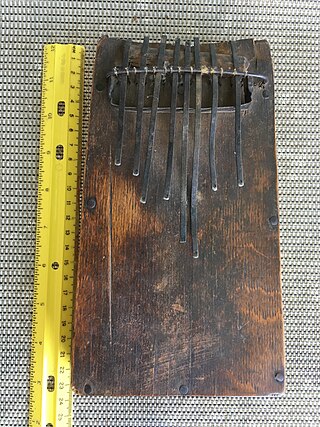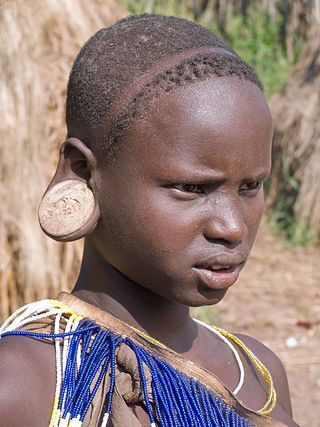Location

The Tennet home area consists of fifteen (15) villages in the north of Torit in Eastern Equatoria. Tennet population is estimated at about 30,000 people. [1]
The Tennet people (referred to as "Tennet" in early language studies [1]) are South Sudanese. Their language is sometimes referred to as Ngaarit. Tennet traditional dances are divided into the following categories: Lalu, Nyaliliya, Loduk, and so on
The majority of the Tennets are reported to be bilingual. They speak the languages of the neighbouring communities. They are bordered by Lopit to the east and west, Pari to the northwest, Greater Pibor and Bor to the north, and Toposa and Laarim to the northeast. They have, nevertheless, maintained a strong ethnic identity and resisted absorption by neighbouring communities by conserving their culture and language. They are still using Tennet.

The Tennet home area consists of fifteen (15) villages in the north of Torit in Eastern Equatoria. Tennet population is estimated at about 30,000 people. [1]
The Tennet have an account of how they were once part of a larger group, which also included what are now Murle, Didinga, and Laarim Boya, the other members of the Southwest Surmic language family. Members of a hunting party speared an oribi, but after cooking it, they drank the broth themselves instead of giving it to the elders according to custom. A disagreement arose, and in the end, they separated, splitting into four smaller groups. The other three groups have similar stories. [2] Some estimates place this event in the early nineteenth century. [3]
The Tennet learned ironworking from the Bari people. [4] However, during Sudan's civil wars, blacksmith activity decreased.
Tennet is a Nilo-Saharan, Eastern Sudanic, Surmic language. It has several of the features common in other Surmic languages: Implosive consonants, multiple strategies for marking numbers on nouns, [5] [6] a marked nominative case system, [7] and VSO order but sentence-final question words. [8]
The Tennet people practice swidden agriculture. They grow sorghum mostly on the plains below the villages, but they also cultivate fields on the mountainsides. They raise cattle, which are the main measure of wealth and are used for bride wealth, and they also hunt, fish, and raise goats and sheep. However, they are primarily dependent on sorghum, and drought can cause severe food shortages.
The Tennet communities are governed by the ruling age set, called the Machigi Looch, (this word means the rulers and the owners of the land). [9] The Members of the Machigi Looch are young men who are old enough to participate in warfare (cattle raiding and defence of the village). They make decisions, but they are also held accountable by the retired Machigi Looch, the elders. A new group of Machigi Looch is initiated about every twelve years.
Tennet music is pentatonic which is "Rugumon". Carved flutes are common around the villages, and drums are used during dances.

The Nilo-Saharan languages are a proposed family of African languages spoken by somewhere around 70 million speakers, mainly in the upper parts of the Chari and Nile rivers, including historic Nubia, north of where the two tributaries of the Nile meet. The languages extend through 17 nations in the northern half of Africa: from Algeria to Benin in the west; from Libya to the Democratic Republic of the Congo in the centre; and from Egypt to Tanzania in the east.

The Kakwa people are a Nilotic ethnic group and part of the Karo people found in north-western Uganda, south-western South Sudan, and north-eastern Democratic Republic of the Congo, particularly to the west of the White Nile river.
Tama, or Tamongobo, is the primary language spoken by the Tama people in Ouaddai, eastern Chad and in Darfur, western Sudan. It is a Taman language which belongs to the Eastern Sudanic branch of the Nilo-Saharan language family. Miisiirii is often considered a dialect, though it is not particularly close.

In most classifications, the Eastern Sudanic languages are a group of nine families of languages that may constitute a branch of the Nilo-Saharan language family. Eastern Sudanic languages are spoken from southern Egypt to northern Tanzania.
The Didinga (Didinga) are a Surmic ethnic group that occupy the Didinga Mountains region in Budi County, Eastern Equatoria State in South Sudan. They live in the valleys, on the plateaus and slopes, and on the adjacent plains of the region. Their neighbors include the Toposa, Turkana, Boya, Ketebo, Logir, Ik, Dodos and Dongotona peoples - groups with whom the Didinga have had frequent conflicts due to economic pressures.

The Kadu languages, also known as Kadugli–Krongo or Tumtum, are a small language family of the Kordofanian geographic grouping, once included in Niger–Congo. However, since Thilo Schadeberg (1981), Kadu is widely seen as Nilo-Saharan. Evidence for a Niger-Congo affiliation is rejected, and a Nilo-Saharan relationship is controversial. A conservative classification would treat the Kadu languages as an independent family.
The Surmic languages are a branch of the Eastern Sudanic language family.

The Murle are a Surmic ethnic group inhabiting the Pibor County and Boma area in Greater Pibor Administrative Area, South Sudan, as well as parts of southwestern Ethiopia. They have also been referred as Beir by the Dinka and as Jebe by the Luo and Nuer, among others. The Murle speak the Murle language, which is part of the Surmic language family. The language cluster includes some adjoining groups in Sudan, as well as some non-contiguous Surmic populations in southwestern Ethiopia.

The Majang people, or Majangir, live in southwestern Ethiopia and speak a Nilo-Saharan language of the Surmic cluster. The 1998 census gave the total of the Majangir population as 15,341, but since they live scattered in the hills in dispersed settlements, their actual total number is undoubtedly much higher. They live around cities of Tepi, Mett'i, and scattered southwest of Mizan Teferi and towards Gambela.

The Majang language is spoken by the Majangir people of Ethiopia. Although it is a member of the Surmic language cluster, it is the most isolated one in the group. A language survey has shown that dialect variation from north to south is minor and does not seriously impede communication. The 2007 Ethiopian Census lists 6,433 speakers for Majang (Messengo), but also reports that the ethnic group consists of 32,822 individuals. According to the census, almost no speakers can be found in Mezhenger Zone of Gambela Region; a total of eleven speakers are listed for the zone, but almost 10,000 ethnic Mejenger or Messengo people.
The Baale language, Baleesi or Baalesi is a Surmic language spoken by the Baale or Zilmamo people of Ethiopia, and by the Kachepo of South Sudan. It is a member of the southwest branch of the Surmic cluster; the self-name of the language and the community is Suri, which is the same as that of the Suri language, evoking an ethnonym that embraces the Tirma, Chai, and Baale communities, although linguistically the languages of these communities are different. There are currently 9,000 native speakers of Baleesi, 5,000 in South Sudan and 4,100 in Ethiopia; almost all of these are monolingual.
The Boya are a Surmic ethnic group numbering 20,000 to 25,000 people living in Budi County, part of the Greater Kapoeta region of the South Sudanese state of Eastern Equatoria.
Murle is a Surmic Language spoken by the Murle people in the southeast of South Sudan, near the Ethiopian border. A very small number of Murle live across the border in southwestern Ethiopia.
Suri, is a Surmic language spoken in the West Omo Zone of the South West Ethiopia Peoples' Region in Ethiopia, to the South Sudan border by the Suri. The language has over 80% lexical similarity to Mursi. The language is often referred to by another form of its name, Surma, after which the Surmic branch of Eastern Sudanic is named, but that form is frequently used for the three related languages spoken by the Surma people: Suri, Mursi, and Me'en.

Suri is a collective name for three ethnic groups mainly living in Suri woreda, in southwestern Ethiopia. They share many similarities politically, territorially, culturally and economically but speak different languages. They all speak South East Surmic languages within the Nilo-Saharan language family, which includes the Mun, Majang, and Me'en people's languages.

South Sudan is home to around 60 indigenous ethnic groups and 80 linguistic partitions among a 2021 population of around 11 million. Historically, most ethnic groups were lacking in formal Western political institutions, with land held by the community and elders acting as problem solvers and adjudicators. Today, most ethnic groups still embrace a cattle culture in which livestock is the main measure of wealth and used for bride wealth.
Tennet is a Surmic language spoken by the Tennet people in South Sudan. The Tennet home area is a group of fifteen (15) villages at the northern part of Eastern Equatoria state, 65 kilometers northeast of Torit.
Laarim or Narim is a Surmic language spoken by the Laarim people of the Laarim Hills of South Sudan.
Gumuz is a dialect cluster spoken along the border of Ethiopia and Sudan. It has been tentatively classified within the Nilo-Saharan family. Most Ethiopian speakers live in Kamashi Zone and Metekel Zone of the Benishangul-Gumuz Region, although a group of 1,000 reportedly live outside the town of Welkite. The Sudanese speakers live in the area east of Er Roseires, around Famaka and Fazoglo on the Blue Nile, extending north along the border. Dimmendaal et al. (2019) suspect that the poorly attested varieties spoken along the river constitute a distinct language, Kadallu.
Gerrit Jan Dimmendaal is a Dutch linguist and Africanist. His research interests focused mainly on the Nilo-Saharan languages.